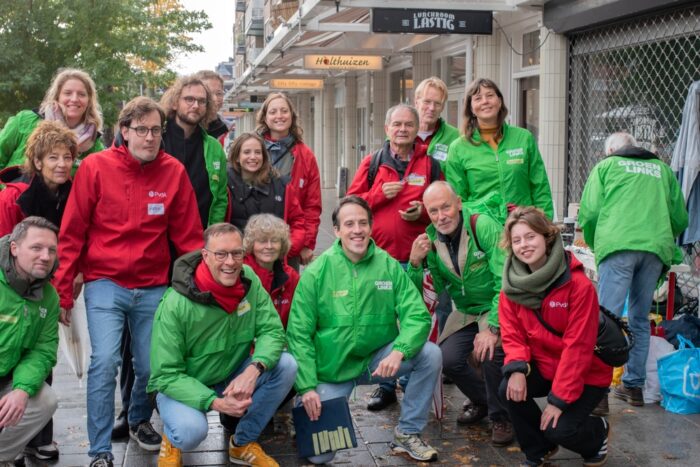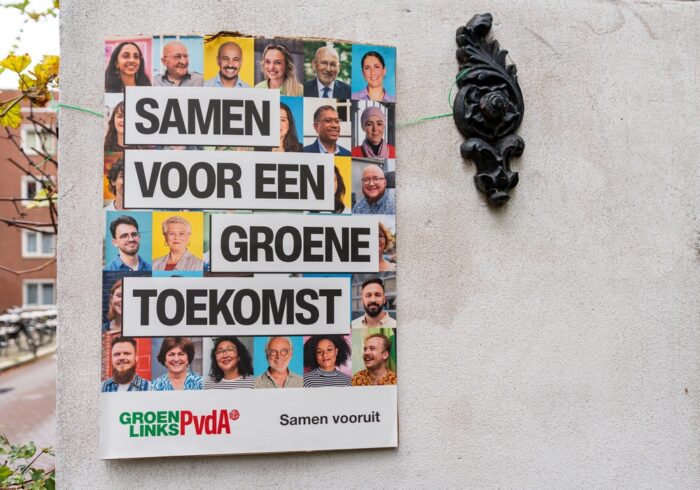The Progressive Post
The Danish elections: a victory with a bittersweet dilemma

The Danish Social Democrats received their best result in 20 years at the national elections on 1 November. Now the challenge is whether the government that is to be formed will strengthen the new progressive agenda of the Social Democrats or if it will weaken it.
The general elections in Denmark on 1 November followed the trend of the Swedish elections in September. The Social Democrats improved their number of voters, but other parties in the majority supporting the Social Democratic government were weakened. At this election, apparently, almost 50 per cent of all voters changed party from the last election. It is still too early for a deeper analysis of this massive mood change in the electorate, but the consequences are clear.
The question after the elections is if the Social Democrats will be able to continue a progressive agenda or if the overall election result will push a new Social Democratic lead government into a more liberal centrist agenda. The Social Democrats are now by far the largest party in Denmark. The party got 27.5 per cent, the best result in 20 years. The overall outcome had two other significant results: the parliamentary majority behind the Social Democratic government is now down to one mandate in the parliament due to a significant loss for the centrist Radicals, and all other 13 parties in the parliament have a following under 10 per cent but the righ-twing Liberals with 14 per cent.
Thereby, the Conservatives and the centre-right Liberals lost their historical positions as the unquestioned leaders of the centre-right. And the political centre got strengthened, though the centre-party, the new Moderates, with 8 per cent, still has to show if it leans to the centre-right or towards a more progressive agenda.
The Social Democrats won the last elections in 2019 on a traditional Social Democratic platform of more robust welfare, not least improving a new right to early pension for workers who started their working life early and better-balanced development in smaller cities and the countryside vis-a-vis the biggest cities plus a tighter policy on refugees and immigrants. This strategy improved its standing amongst its traditional voter group of workers outside the bigger cities. That reversed the trend over the last 20 years, where a significant part of this voter group moved to the right-wing Liberals and the right-wing Danish Peoples Party.
The transformation of the use of the word ‘reform’ is a way to follow this development. Over the last decades, ‘reform’ has been used to frame the neo-liberal agenda of deteriorating welfare and pensions and diminishing the role of the public sector. The last Social Democratic Prime Minister in 2011-2016 governed on a platform with the centrist social-liberal Radical who insisted on the same neo-liberal frame. Since 2016, Mette Frederiksen has tried to reframe ‘reform’ so that it also defines policies that improve welfare and the role of the public sector. Thereby, the workers traditionally voting for Social Democratic could again equal ‘reforms’ with hope.
Two major questions for the Social Democrats in this year’s election campaign were if the trend of gaining the workers would continue and, if so, would the party then, at the same time, be able to win back some of the middle-class voters in the bigger cities who have left due to the more traditional profile, especially to parties with a stronger weight on the green transition and climate policy.
The result of the campaign this time was that the Social Democrats won both in bigger cities and in the rest of the country. It seems that the party has been able to renew its coalition with both workers outside the bigger cities and the middle class of the bigger cities.
The Social Democrats have struggled trying to build such a coalition since it lost the local and regional elections a year ago. A few years ago, Mette Frederiksen, the Social Democratic leader and Prime Minister, said she was more red than green, but after having lost the local and regional elections she changed and said that “now I am no longer red before I am green”.
She went to the 2022 elections arguing for better salaries for parts of the public sector, defending the level of public pension and a responsible policy in the present situation of inflation and energy crisis and war. Two days before election day the Social Democratic leader participated in a demonstration for a stronger climate policy under the slogan that a red (centre-left) majority would ensure green policies.
Mette Frederiksen further argued that after three and a half year with a one-party Social Democratic minority government she would try to form a government with more parties, including parties of the centre and centre-right.
Now the process of forming a new government has started.
The big challenge in this process is if Mette Frederiksen and the Social Democrats will be able to form such a new broad multi-party government and at the same be able to continue the newly won coalition in its voter group for progressive policies for welfare, pensions and green issues. There is no doubt that the parties of the centre and the centre-right will try to insist on a less progressive agenda with a slower climate policy and where ‘reforms’ again only will mean weakened welfare.
This is a bittersweet dilemma because it might trap the Social Democrats in a platform where the actual policies will threaten its newly won coalition of workers and the middle class. Only time will tell what the final lessons will be from those elections. One thing to look for is how the word ‘reforms’ will be used in the time to come.
Other takeaways from the Danish elections are:
- Policies on refugees and immigrants did not play a major role for the first time in two decades
- The Conservatives lost big time due to a clear neo-liberal right-wing platform arguing for massive tax cuts, not least to the richest and also some credibility issues for the party leader.
- The right-wing Liberals won almost 30 per cent of the vote in 2001, but now, they are split into three parties: a former liberal Prime Minister formed the centrist ‘Moderates’, ad a former liberal minister formed the ‘Danish Democrats’. The Liberals have split their own winning formula from years back: refugees and immigrants and the neo-liberal economic agenda.
- People who have seen the Danish TV series ‘Borgen’ may remember that there, a former Prime Minister, Birgitte Nygaard, formed a new party called the Moderates. Now the author of the Borgen said that the difference between the TV-Moderates and the Moderates running for real elections is that the leader of the former is an idealist while the leader of the latter is a pragmatist.
Photo credits: Shutterstock.com/ArDanMe




